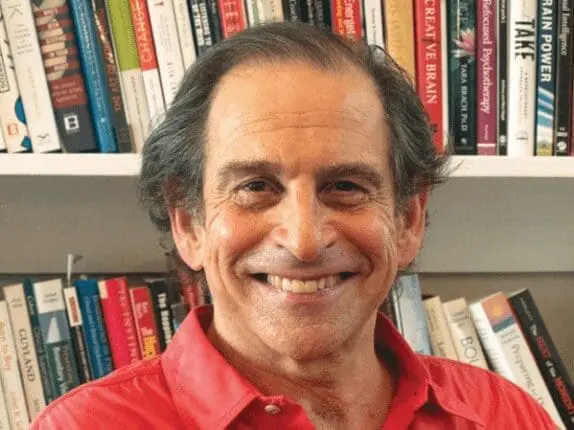The Networker Symposium is not only a showcase for new ideas and therapeutic innovations. It’s not only a meeting place where, for a few days, therapists allow themselves to become students again. And it’s not only a bustling gathering where you can go to get recharged and feel the electricity of mingling with several thousand colleagues and kindred spirits.
Of course, the Symposium is all of that, but it’s also something that’s hard to describe without sounding too ethereal. At its heart, the Symposium is a Brigadoon, an oasis from the tumult of these difficult times, more a state of mind than a physical place. It’s an entry into a world where the usual didactic relationship between conferencegoers and presenters is transformed into something more like the creative interconnection between performers and their audience.
For me this year, the power of the Symposium as theater was everywhere I looked. Listening to the featured speakers, I felt how their larger-than-life presence on the main stage provided an emotional undercurrent pervading the entire conference. At a meeting devoted to understanding the often circuitous paths to healing, they were our guides for the journey. Just by daring to take center stage in front of that huge throng, they seemed to promise new vistas for understanding human experiences—especially the dark and challenging ones. At their most powerful moments, they made the stage swell with passion and purpose, expanding our worlds in ways that would live in us for a long time to come.
As I made my way around the conference, I poked my head into a number of clinical workshops. There, a whole different kind of theater was unfolding, one more interactive and instructive. The stage was less imposing and the focus more practical, but these workshops are the reason most attendees give for coming to Symposium. They’re looking for tools that will help them become more skilled at guiding the intimate dramas for which their offices provide the stage. After all, theater comes in all shapes and sizes.
But there’s theater, and then there’s theater. While the keynotes and workshops were compelling in their different ways, the Saturday evening storytelling event invited us into an aspect of the therapy experience that’s rarely acknowledged. There, standing before an audience of hundreds of their colleagues, without any notes, five therapists each told a deeply personal story of a professional stumble—the sort of distressing, I-can’t-believe-I-did-that blunder that all clinicians make but rarely share with each other. In these true tales, which are published in this issue, the storytellers made a leap of faith, dropping all pretense of professional omniscience and trusting their colleagues to listen from the heart.
The audience turned out to be worthy of that trust. As they listened, the sense of communion between storyteller and audience was palpable. And I noticed something else among us, something I can only describe as pride. By the evening’s end, I felt proud to be part of this profession filled with people courageous enough to be seen in all their fallible humanity.
I think that’s why the storytellers got the longest standing ovation at the entire conference. It was an act of gratitude, a heartfelt thank you for daring to put themselves out there for the benefit of all of us. Many other exciting events took place on that main stage, but in none of them was the power of theater to dissolve the distance between performer and audience, creator and witness, more unforgettably on display.
Richard Simon, Editor
Rich Simon
Richard Simon, PhD, founded Psychotherapy Networker and served as the editor for more than 40 years. He received every major magazine industry honor, including the National Magazine Award. Rich passed away November 2020, and we honor his memory and contributions to the field every day.













